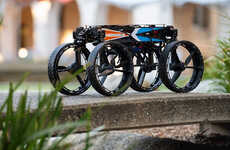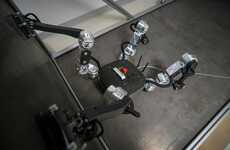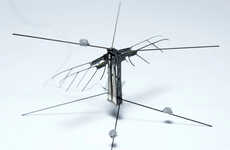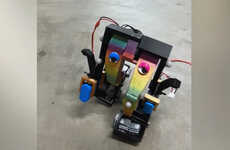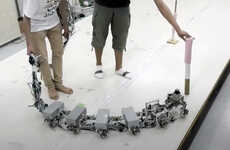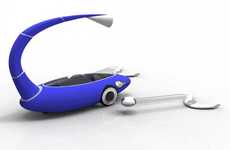
These Cubic Robots are Able to Assemble Themselves
Vasiliki Marapas — December 18, 2014 — Unique
References: web.mit.edu & web.mit.edu
John Romanishin, Daniela Rus and Kyle Gilpin introduced M-Blocks, cubic robots with no externally moving parts, at the International Conference on Intelligent Robots and Systems.
Despite their lack of externally moving parts, the robots are able to climb, jump and roll around. A flywheel that rotates up to 20,000 revolutions per minute is inside each robot. When braked, the flywheel transmits its angular momentum to the M-Block, which has magnets on each face, allowing it to attach to other M-Blocks (or, in other words, self-assemble). The robotics simplified existing modular-robot systems by ridding themselves of the concept of static stability.
The team faced opposition and disbelief along the way, but preserved long enough to create a design that the robotics community has been long interested in achieving.
Despite their lack of externally moving parts, the robots are able to climb, jump and roll around. A flywheel that rotates up to 20,000 revolutions per minute is inside each robot. When braked, the flywheel transmits its angular momentum to the M-Block, which has magnets on each face, allowing it to attach to other M-Blocks (or, in other words, self-assemble). The robotics simplified existing modular-robot systems by ridding themselves of the concept of static stability.
The team faced opposition and disbelief along the way, but preserved long enough to create a design that the robotics community has been long interested in achieving.
Trend Themes
1. Modular Robotics - The trend of self-assembling modular robots presents opportunities for disruptive innovation in industries such as manufacturing and logistics.
2. Dynamic Stability - The trend of robots achieving stability through dynamic systems opens up disruptive innovation opportunities in industries like healthcare and construction.
3. High-speed Flywheel Technology - The trend of incorporating high-speed flywheel technology in robots can disrupt industries such as aerospace and defense.
Industry Implications
1. Manufacturing - The manufacturing industry can benefit from self-assembling modular robots, streamlining production processes and increasing efficiency.
2. Logistics - In the logistics industry, self-assembling modular robots can revolutionize warehouse operations and improve order fulfillment speed and accuracy.
3. Healthcare - Dynamic stability in robots has the potential to transform healthcare industries by enabling safe and precise robotic surgeries.
3.9
Score
Popularity
Activity
Freshness



